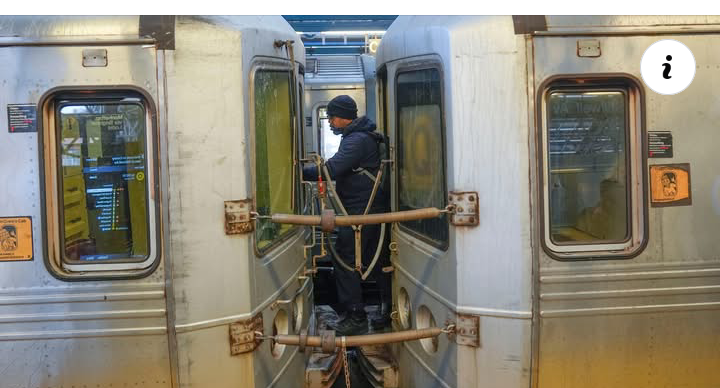New York City – City officials are stepping up efforts to curb the dangerous practice of “subway surfing,” in which riders cling to the outside of moving subway trains
New York City – City officials are stepping up efforts to curb the dangerous practice of “subway surfing,” in which riders cling to the outside of moving subway trains, by introducing education and outreach programs aimed at young commuters.
Authorities say the new initiatives focus on raising awareness of the severe risks involved. Campaigns include school visits, social media outreach, and public service announcements designed to discourage riders from attempting stunts that could result in serious injury or death.
Transportation officials report that subway surfing incidents have occurred more frequently in recent years, often involving teenagers and young adults seeking thrills. The practice not only endangers those involved but also poses risks to train operators, passengers, and emergency responders.
Despite these programs, some transportation advocates argue that education alone is insufficient. They emphasize the need for stronger enforcement measures, improved station safety, and enhanced surveillance to prevent riders from accessing train rooftops or running along tracks.
Lawmakers have echoed these concerns, calling for stricter penalties for individuals caught engaging in subway surfing. Proposals include higher fines, community service requirements, and mandatory safety education programs for offenders.
New York City’s transit authority maintains that the education initiatives are a critical first step. Officials highlight that most incidents occur among first-time or inexperienced subway surfers who may not fully understand the life-threatening risks involved in climbing or riding on moving trains.
Emergency responders and medical professionals warn of the severe injuries that can result from subway surfing. Falls onto tracks, collisions with train infrastructure, and contact with live electrical lines can lead to broken bones, severe trauma, or fatal electrocution.
Community groups are also getting involved, partnering with transit officials to host workshops and after-school programs that offer safe alternatives for thrill-seeking youth. Mentorship programs and recreational activities aim to redirect young people away from risky behaviors.
Data from recent years shows that educational campaigns have had some impact, but challenges remain. The popularity of social media videos featuring dangerous stunts continues to inspire others, highlighting the difficulty in fully eliminating subway surfing despite public awareness efforts.
City officials stress that public cooperation is essential to curbing this trend. They urge residents to report incidents, discourage risky behavior among peers, and reinforce the message that subway surfing is illegal, dangerous, and potentially deadly.




